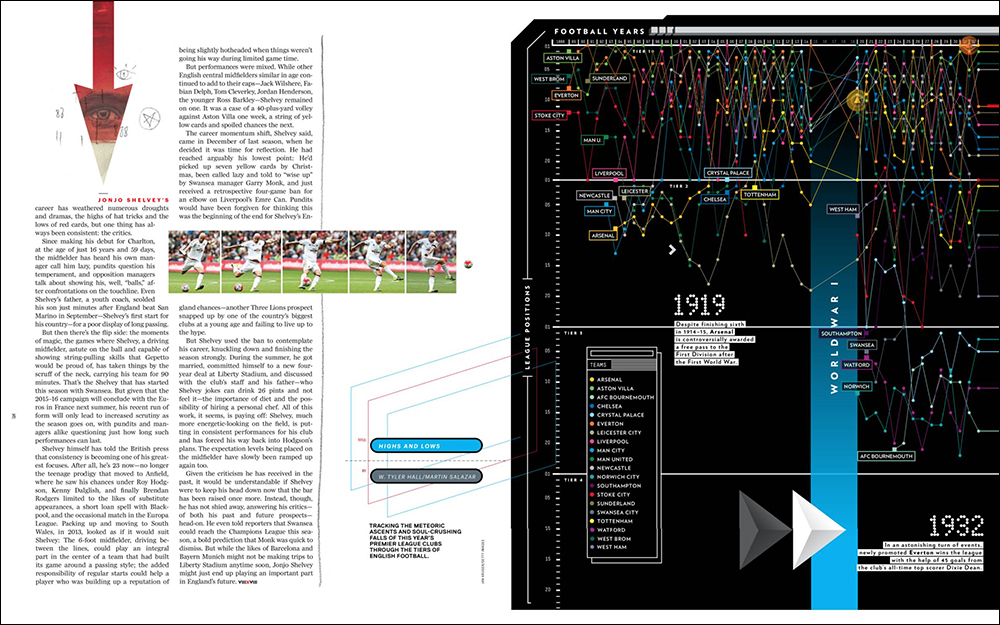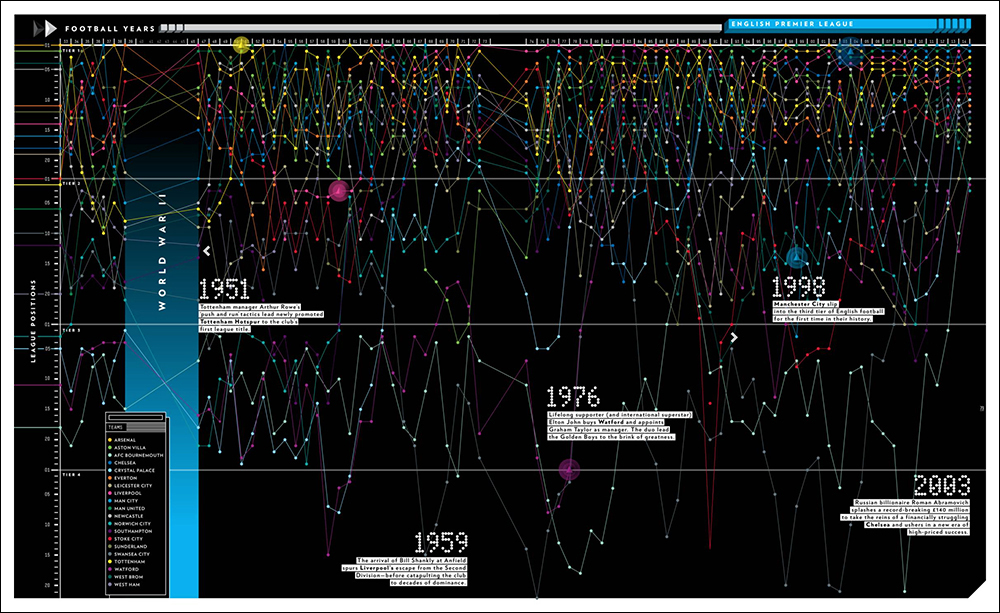MORE INFOGRAPHICS FROM EIGHT BY EIGHT MAGAZINE.

I was watching a championship game, and the winning team were presented with a huge, heavy trophy. I realized that I didn’t really know what many major trophies looked like. So I began looking for information about them. They’re shown to the same scale, color-coded by type, and compared in size to the 2014 World Cup soccer ball. Surprisingly, they’re not all well-documented. My international infographics contacts helped me pin down the more difficult details. A few points: The most important one of all, the World Cup, is the smallest. The gin and tonic, my favorite drink, is part of the branding of this spread.
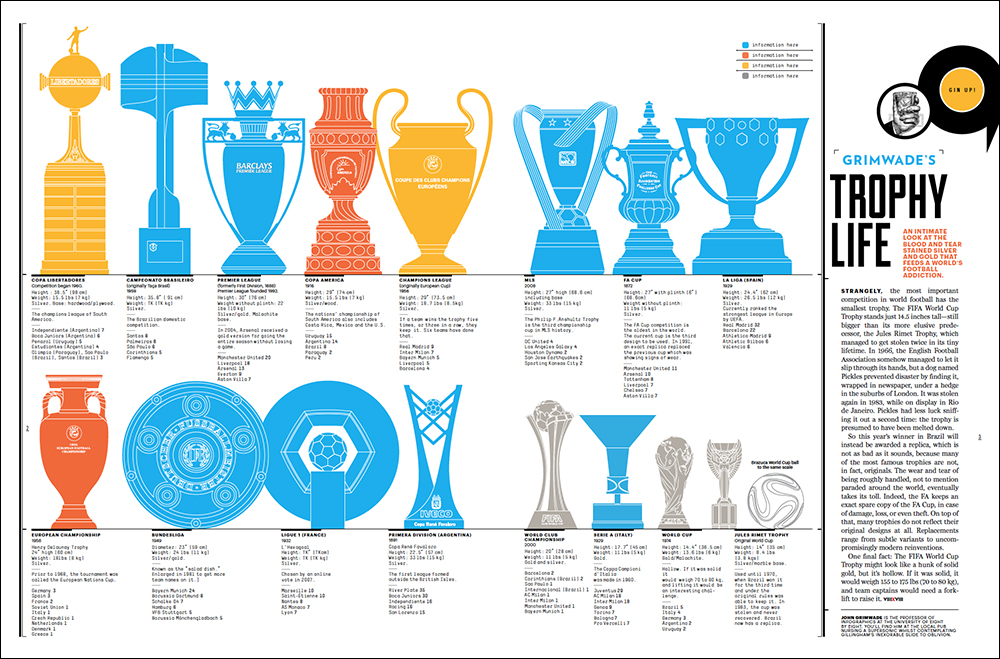
A Premier League team doctor gave us the inside details on the essential physical exam that a player has to undergo before a club finalizes the deal. At the bottom, he describes the common injuries that sideline players. Illustration by Michael Hoeweler.

How NYC FC’s pitch fits (tightly) into Yankee stadium. They also sometimes have gridiron football games there, so I showed how that fits too. I really like size comparisons, so I put several related ones in. I’ve always wanted to get the Statue of Liberty into an infographic, and this was my chance.
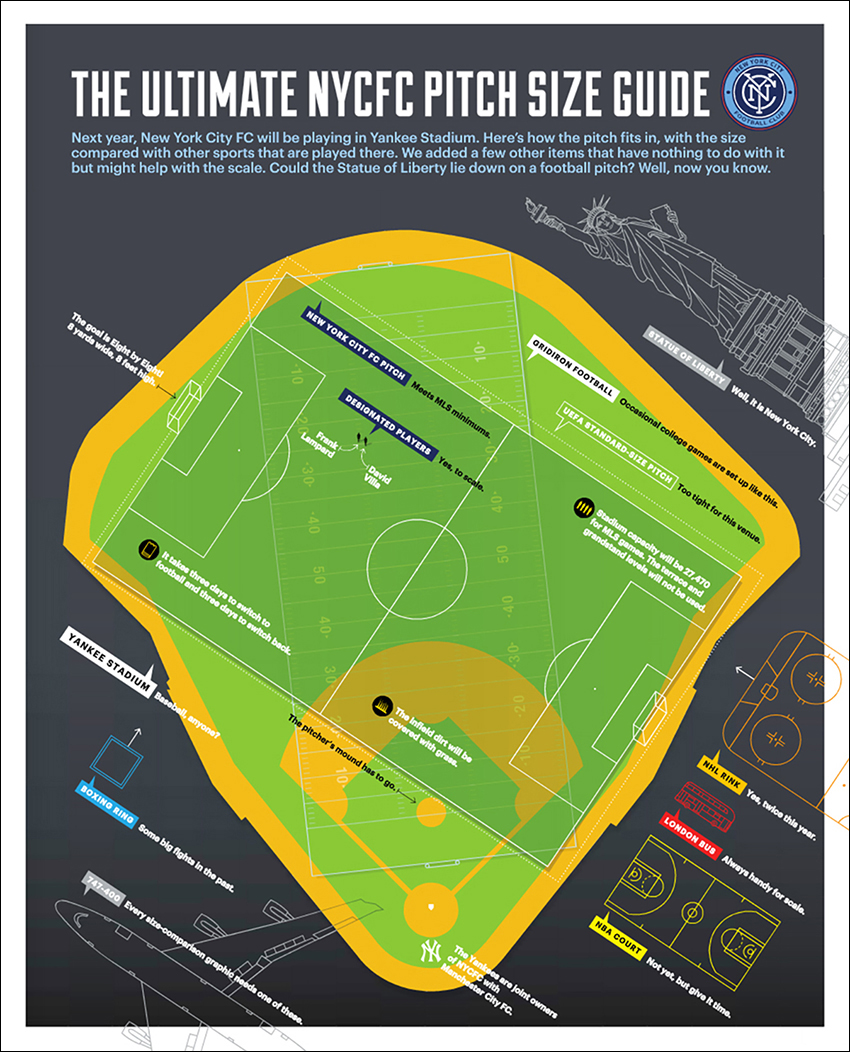
Record-breakers. Gareth Bale is no longer the most expensive player in the soccer world. As of a few weeks ago, it’s Paul Pogba of Manchester United. (See the last post, he’s on the cover).
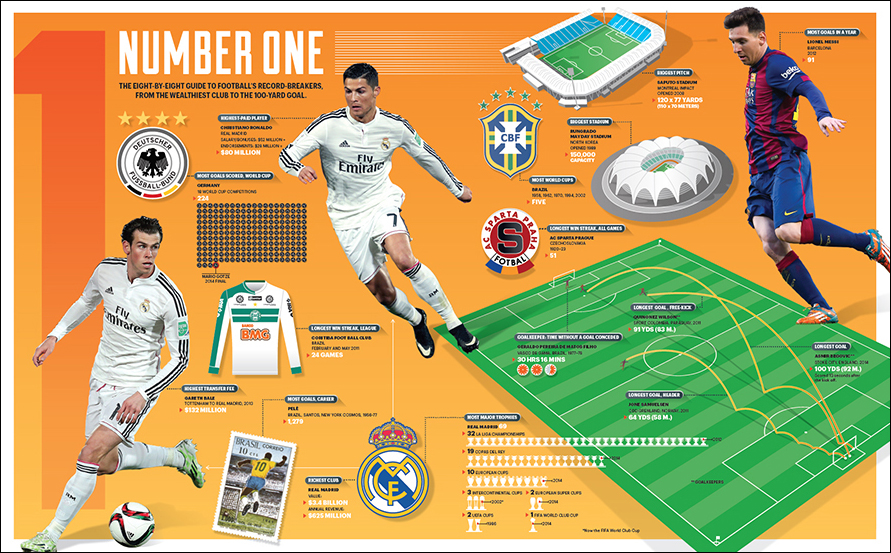
What if the World Cup was decided by a nation’s wealth, or size of population, and not by playing soccer matches? The U.S. or Switzerland would be the champs, not Germany.
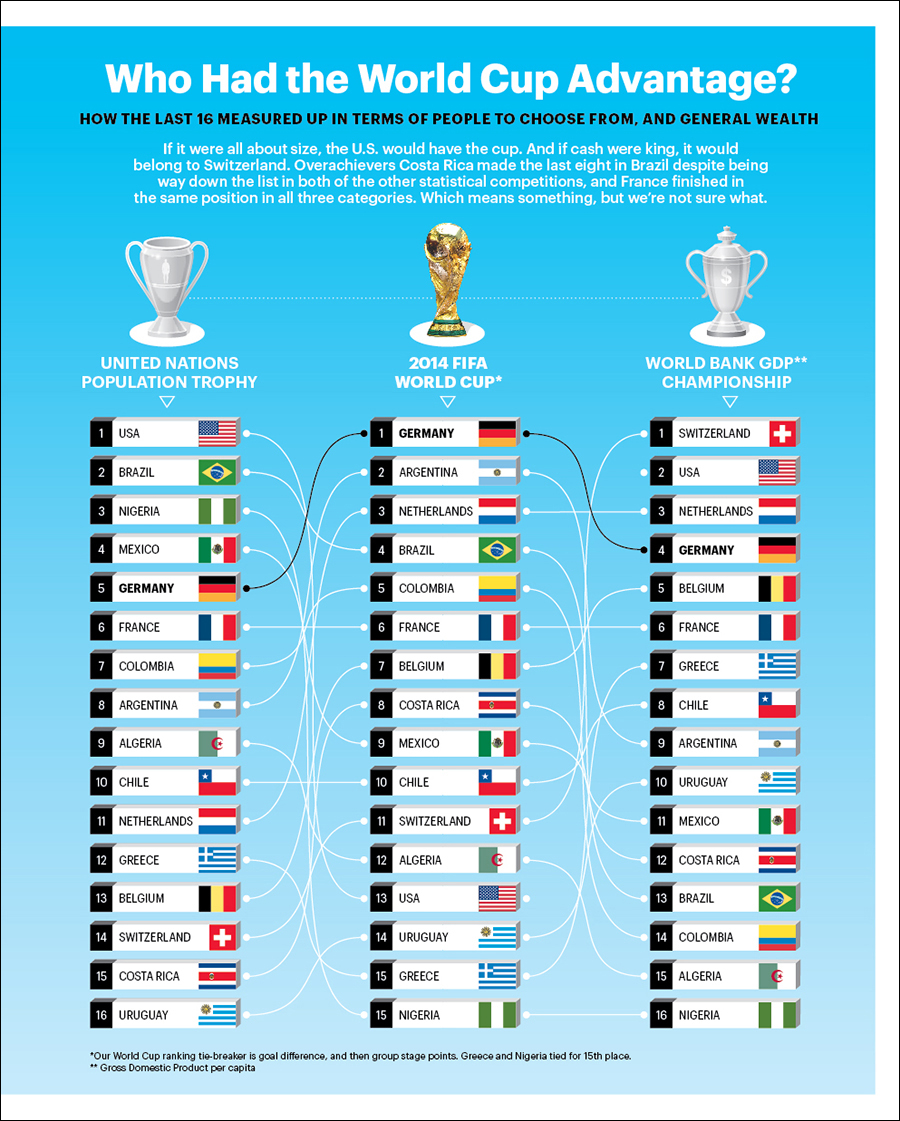
Professor Grimwade holds forth! From the University of Eight by Eight. This is probably the kind of infographic I tell my students at OU not to make. A bunch of fun items with several gratuitous graphic elements.
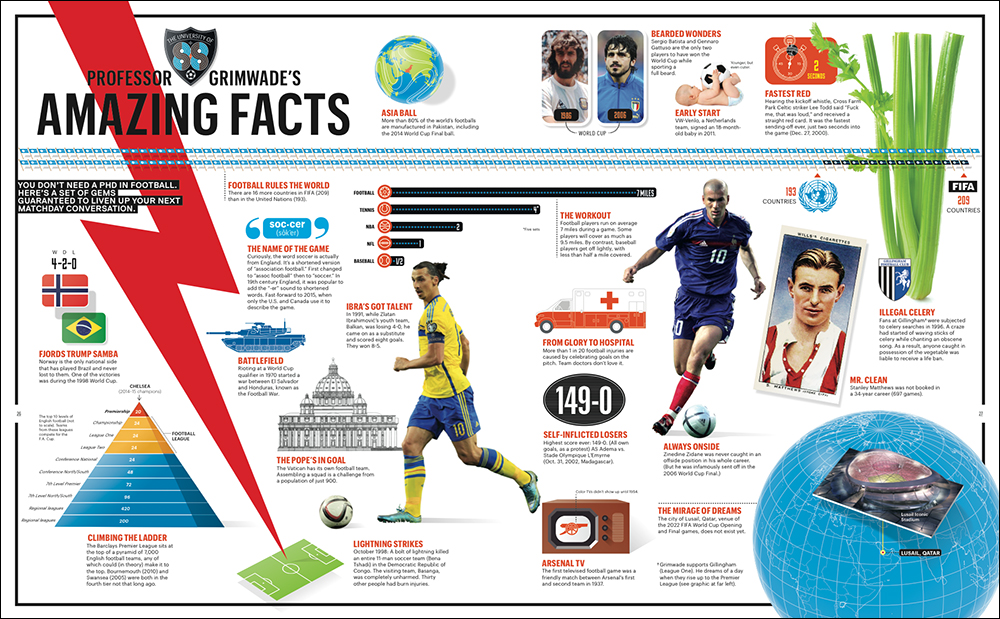
A detailed portrait of the London-based teams that play in the Premier League. By Kim Lightbody.

Tracking where the current English top-flight clubs (as of 2014) have finished the season. It starts from 1888, when the four-tier system began. By W.Tyler Hall and Martin Salazar.
